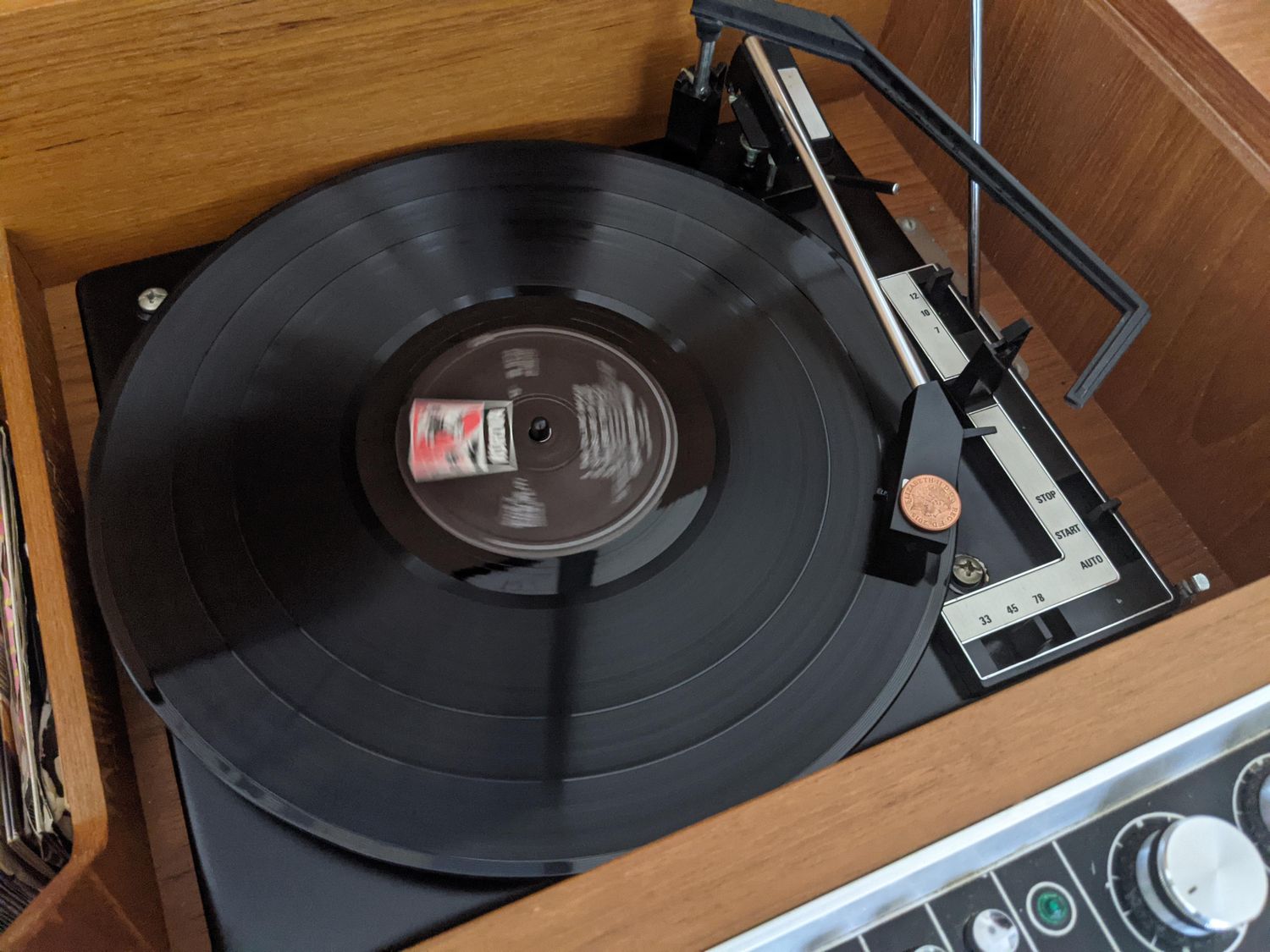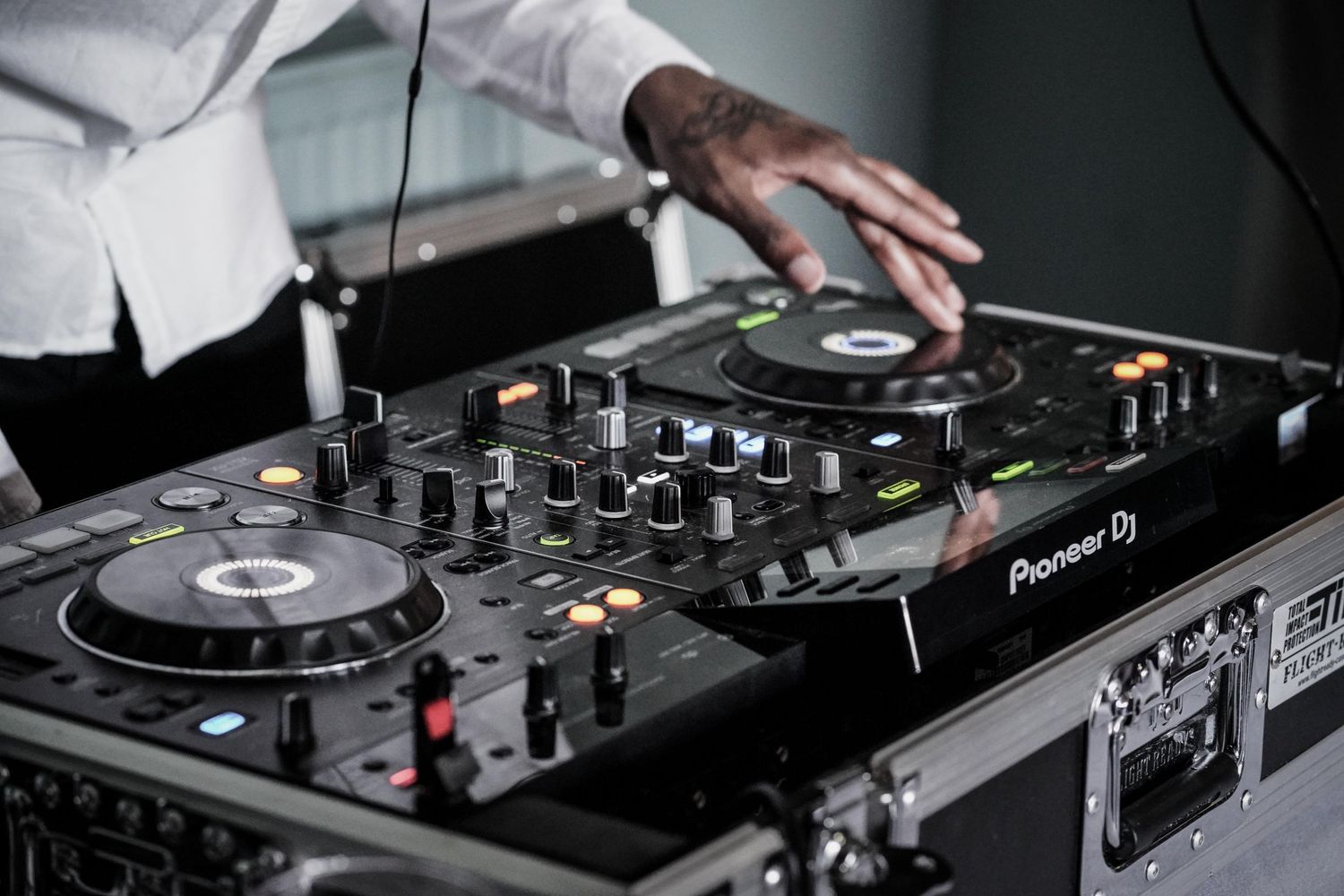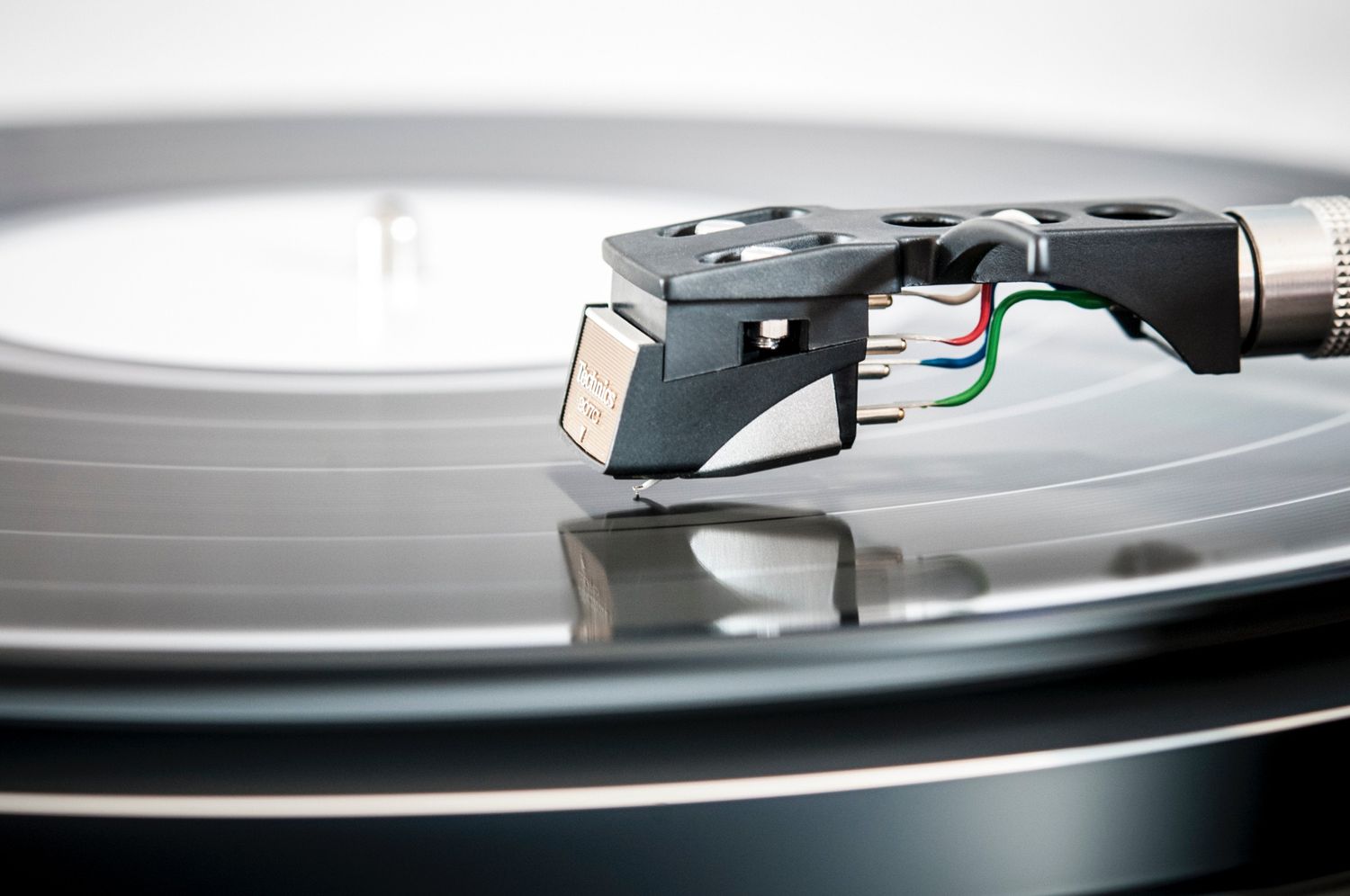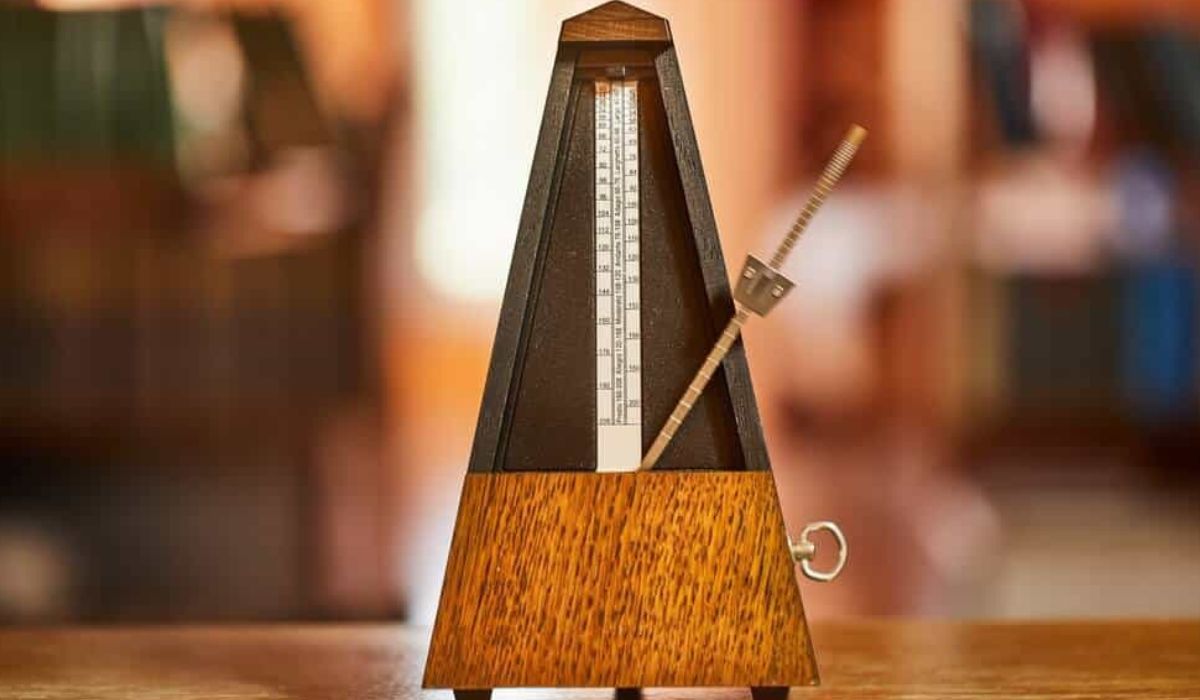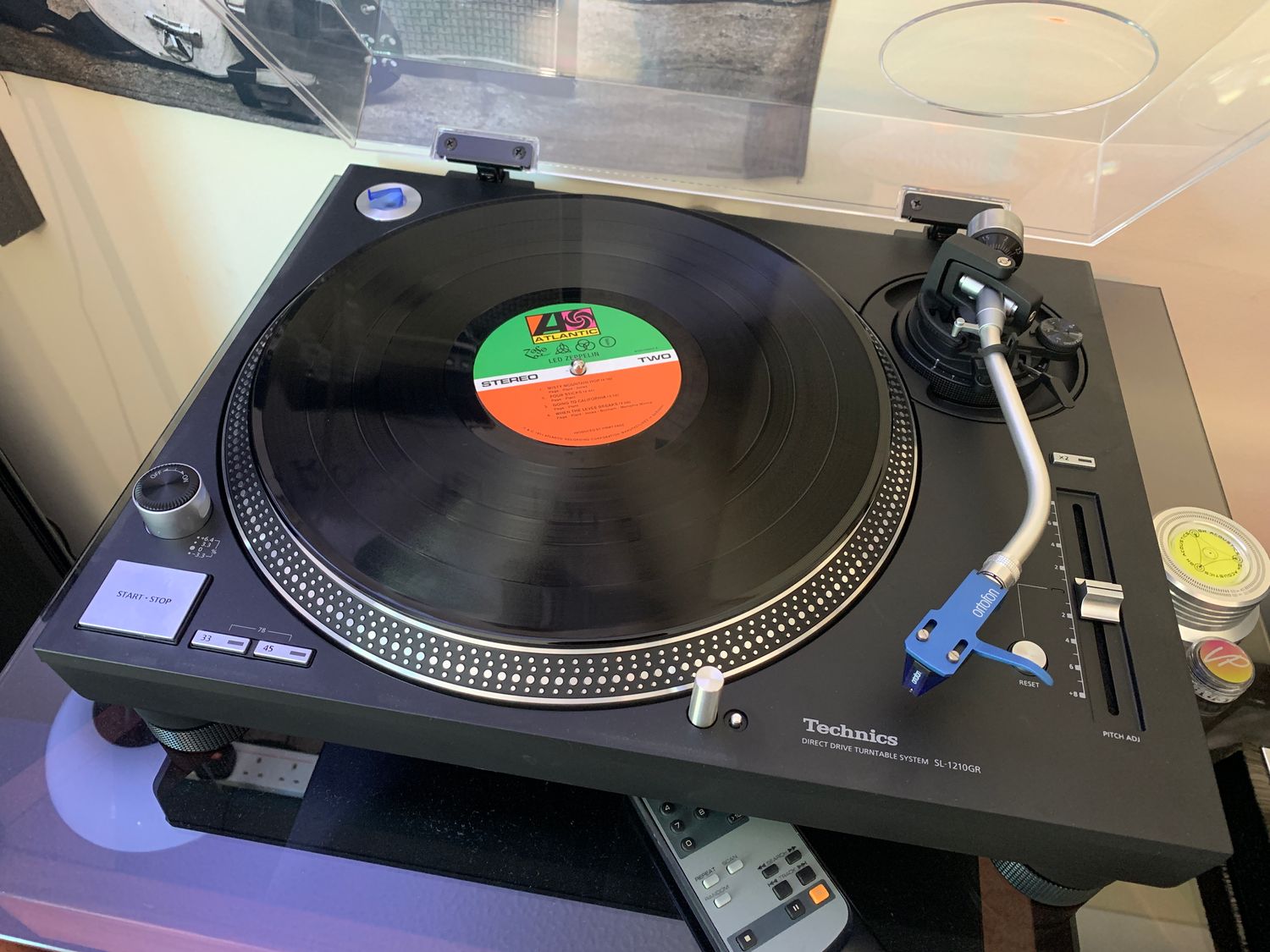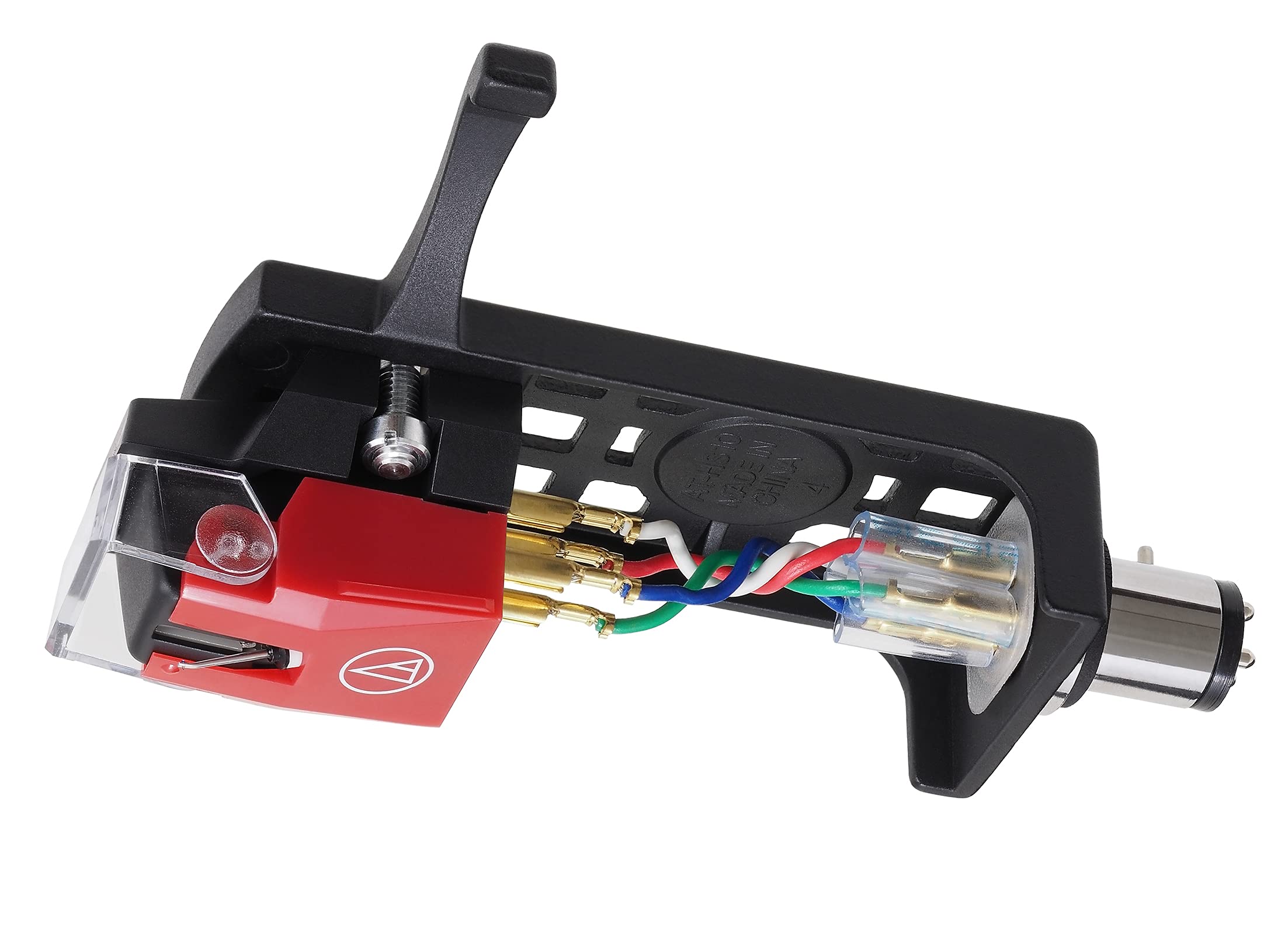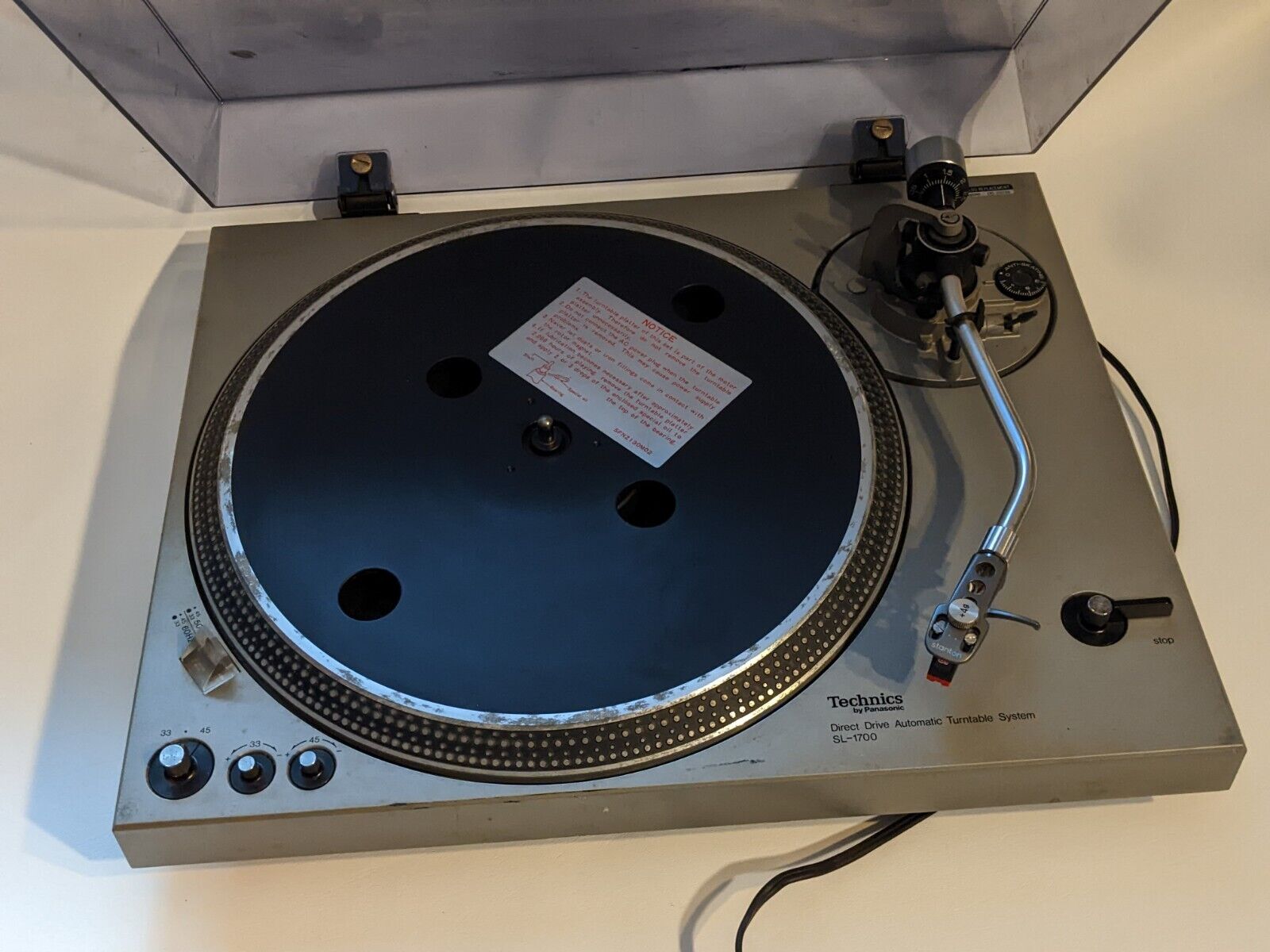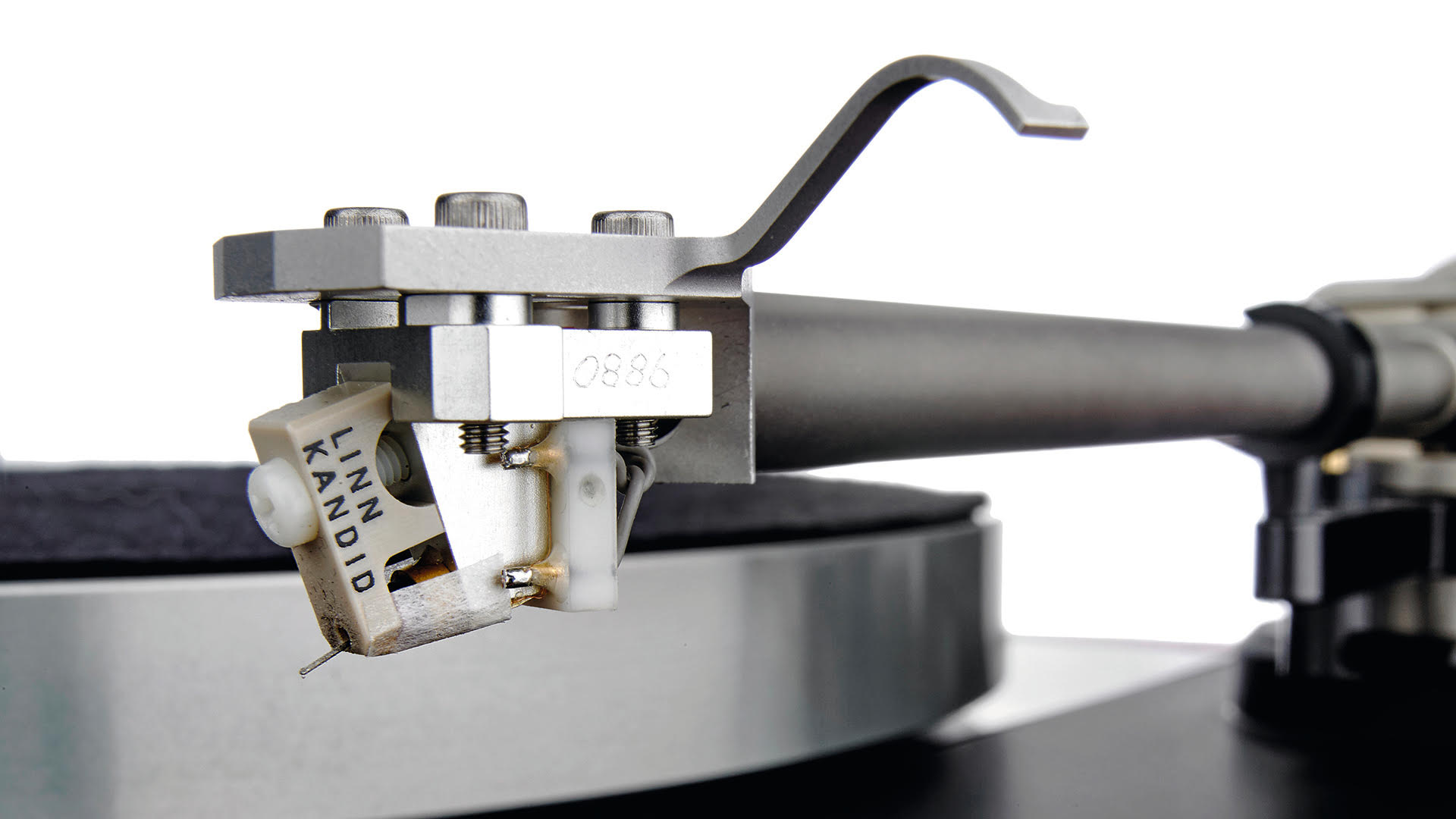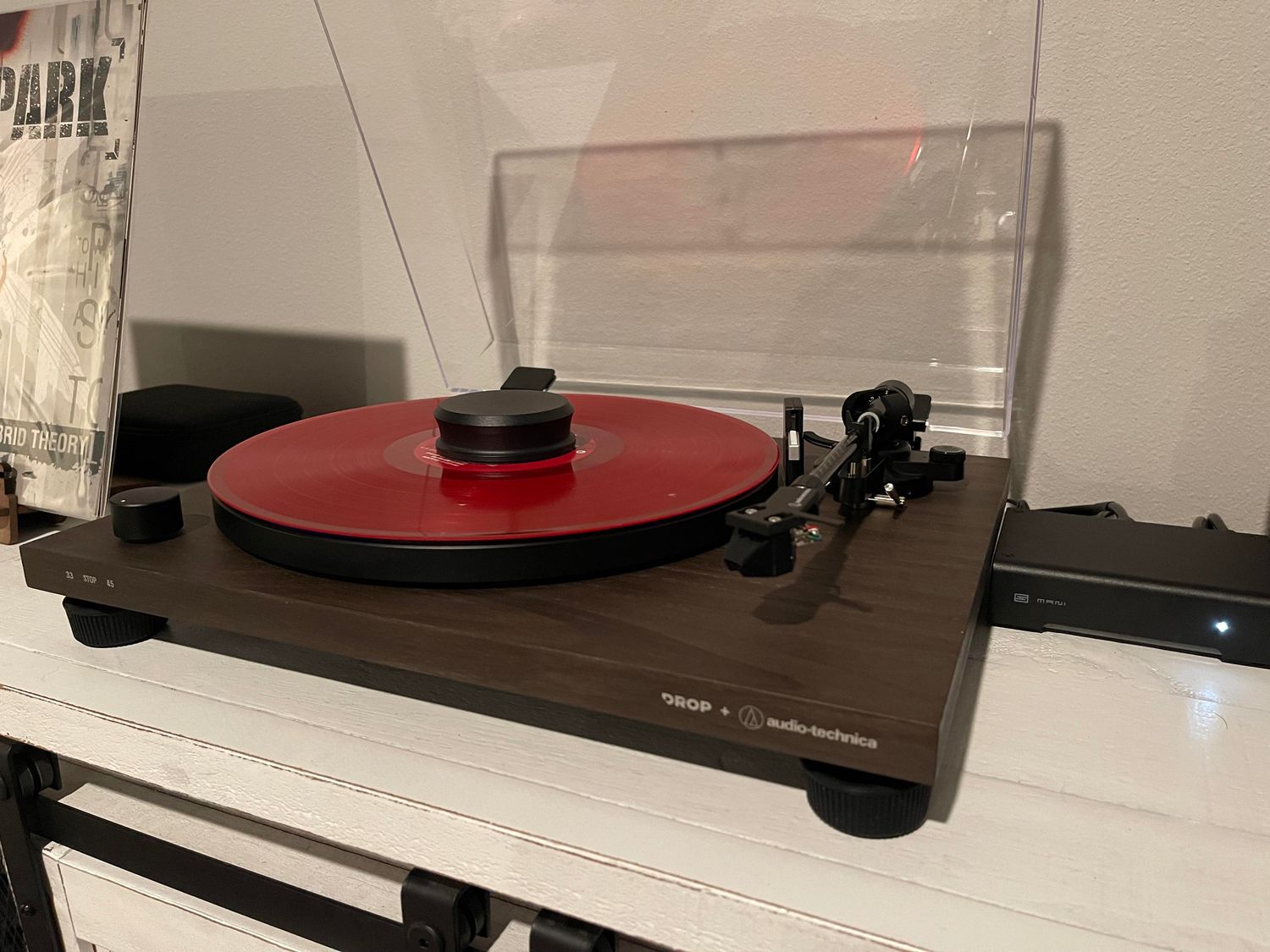Home>Devices & Equipment>Turntable>What Are The Speeds Of A Record Turntable


Turntable
What Are The Speeds Of A Record Turntable
Published: January 18, 2024
Discover the different speeds of a turntable and how they impact your listening experience. Explore the world of vinyl records and find the perfect turntable for your music collection.
(Many of the links in this article redirect to a specific reviewed product. Your purchase of these products through affiliate links helps to generate commission for AudioLover.com, at no extra cost. Learn more)
Table of Contents
Introduction
Record turntables have been a beloved audio device for decades, providing a unique and immersive listening experience. As the resurgence of vinyl continues to grow, more and more people are getting drawn to the warm and authentic sound of records. However, to truly appreciate the audio quality, it is essential to understand the various aspects of a record turntable.
In this article, we will delve into one crucial element of record turntables: the speeds at which they operate. The speed of a turntable determines how fast or slow the record rotates, which directly affects the playback speed and pitch of the music. We will explore the three primary speeds of record turntables and discuss the factors that influence these speeds.
Whether you are a seasoned vinyl enthusiast or just starting your journey, understanding the speeds of a record turntable will help you make informed decisions when it comes to selecting and playing your favorite records. So, let’s dive in and explore the fascinating world of record turntable speeds!
Understanding Record Turntables
Record turntables, also known as record players or phonographs, are devices used to play vinyl records. The basic design consists of a rotating platter, a tonearm, a cartridge, and a stylus. When a record is placed on the platter, the turntable spins it at a specific speed, allowing the stylus to trace the grooves and produce sound. Understanding the components and mechanism of a turntable is vital to appreciate how it operates.
The platter is the part of the turntable that holds and spins the record. It is typically made of rigid materials like aluminum or acrylic to provide stability and minimize vibrations. The tonearm is responsible for holding the cartridge and stylus, allowing them to move across the record’s surface. It is carefully calibrated to ensure precise tracking and minimal distortion.
The cartridge is a small electronic device that houses the stylus. It converts the mechanical vibrations picked up by the stylus into an electrical signal, which is then amplified and sent to the speakers. The stylus, also known as the needle, is the actual point of contact with the record’s grooves. It reads the microscopic variations in the grooves, translating them into sound.
Record turntables come in a variety of designs, from entry-level models to high-end audiophile systems. Different turntables offer varying levels of precision, build quality, and features. Some turntables have built-in phono preamplifiers, allowing them to connect directly to amplifiers or speakers. Others require an external phono preamp to boost the signal before it reaches the audio system.
Understanding the basic components and functionality of record turntables is crucial to ensure proper operation and maintenance. It helps users make informed decisions when purchasing a turntable and allows for optimal performance and longevity.
Speeds of Record Turntables
Record turntables are designed to operate at different speeds, which determine the playback speed and pitch of the music. The three primary speeds of record turntables are 33 1/3 RPM, 45 RPM, and 78 RPM. Let’s explore each speed in more detail:
1. 33 1/3 RPM (Revolutions Per Minute)
The most common speed for record turntables is 33 1/3 RPM. This speed is associated with LP (long-playing) records, which are typically 12 inches in diameter. When a turntable is set to 33 1/3 RPM, the record rotates 33 and one-third times per minute. This slower speed allows for a higher groove density and longer playing time per side. Majority of vinyl albums, including modern releases, are pressed at this speed.
2. 45 RPM (Revolutions Per Minute)
45 RPM is the speed used for singles and EP (extended play) records. These records are often 7 inches in diameter and contain one or two songs on each side. Playing records at 45 RPM offers a more dynamic and punchy sound, as it allows for wider grooves and increased stylus movement. Many collectors and audiophiles enjoy the vibrant energy that 45 RPM records deliver.
3. 78 RPM (Revolutions Per Minute)
78 RPM records were popular in the early 20th century and were made from shellac instead of vinyl. These records were often 10 inches in diameter and played at a faster speed. While 78 RPM records are less common today, some collectors still enjoy the vintage sound and nostalgia they provide. It’s important to note that not all turntables have the capability to play 78 RPM records, as the stylus and cartridge need to be specifically designed for this speed.
Most modern turntables have a switch or button that allows users to change between these different speeds. However, it’s essential to check the specifications of your turntable to ensure it supports the desired playback speed.
The speed at which a record turntable operates directly affects the playback experience. Different speeds offer unique sound characteristics, and it’s up to the listener’s preference and the type of record being played to determine the appropriate speed. Having the flexibility to switch between speeds allows for a diverse and enjoyable vinyl listening experience.
33 1/3 RPM (Revolutions Per Minute)
One of the most common speeds for record turntables is 33 1/3 RPM (Revolutions Per Minute). This speed is typically associated with LP (long-playing) records, which are the standard format for full-length albums. When a turntable is set to 33 1/3 RPM, the record rotates 33 and one-third times per minute.
The 33 1/3 RPM speed was introduced in 1948 by Columbia Records for the first commercially successful LP, and it quickly became the standard for vinyl albums. This speed allows for a more extended playing time per side, as it accommodates higher groove density. LP records typically have a diameter of 12 inches, which provides enough space for grooves to be closer together, resulting in a longer continuous playback time.
Playing a record at 33 1/3 RPM offers several advantages. Firstly, it allows for a more detailed and nuanced sound reproduction. The slower speed allows the stylus to track the grooves more precisely, resulting in a higher level of fidelity and accuracy. This is particularly important for audiophiles and music enthusiasts who appreciate the intricate sonic details and dynamics of their favorite albums.
In addition to better sound quality, 33 1/3 RPM records often feature albums that are more thematically cohesive. Artists and bands carefully curate the tracklist and the overall flow of the album when it is intended to be played at this speed. The slower speed allows for a more immersive and cohesive listening experience, as the music unfolds in a deliberate and purposeful way.
While most modern vinyl releases are pressed at 33 1/3 RPM, it is also worth noting that some older records from the 1950s and 1960s were released at different speeds. Some classical and spoken word records, for example, were occasionally released at 16 2/3 RPM or even 45 RPM. It is important to check the labels or consult online resources to determine the correct speed for these records.
Overall, 33 1/3 RPM is the standard speed for playing LP records on most turntables. It provides a balanced combination of sound quality and playing time, allowing listeners to enjoy the full scope of their favorite albums. Whether you’re a vinyl enthusiast or simply appreciate the warm and rich sound of records, playing them at 33 1/3 RPM ensures an immersive and satisfying listening experience.
45 RPM (Revolutions Per Minute)
Another common speed for record turntables is 45 RPM (Revolutions Per Minute). This speed is primarily associated with singles and EP (extended play) records, which typically feature one or two songs on each side. When a turntable is set to 45 RPM, the record rotates 45 times per minute.
The 45 RPM speed gained popularity in the late 1940s and early 1950s as a format for singles. It provided a faster playback speed and allowed for greater fidelity and dynamic range, particularly compared to the older 78 RPM records. The increased rotation speed resulted in wider grooves and more stylus movement, enabling a higher level of sonic detail and overall quality.
Playing a record at 45 RPM offers several advantages. Firstly, it provides a more lively and vibrant sound, as the increased speed enhances the dynamics and energy of the music. This speed is particularly favored by audiophiles and collectors who appreciate the punchy and dynamic impact of their favorite songs.
In addition to the improved sound quality, 45 RPM records often feature unique and sought-after content. Many artists release limited edition singles on 45 RPM, providing their fans with exclusive tracks, remixes, or B-sides. Collecting 45 RPM records has become a popular hobby, as it allows enthusiasts to own rare and unique versions of their favorite songs.
It’s worth noting that playing records at 45 RPM requires a compatible turntable that is capable of handling this speed. Some turntables have a dedicated switch or button for adjusting between the different speeds, while others may require manual adjustment of the belt or pulley. It’s essential to consult the turntable’s manual or specifications to ensure proper playback at 45 RPM.
Whether you’re a collector, audiophile, or simply enjoy exploring different musical formats, playing records at 45 RPM offers an exciting and engaging listening experience. The vibrant and dynamic sound combined with the exclusive content often found on singles make 45 RPM records a fantastic addition to any vinyl collection.
78 RPM (Revolutions Per Minute)
While less common in today’s music landscape, 78 RPM (Revolutions Per Minute) records played a significant role in the early 20th century. This speed refers to the number of times a turntable rotates in one minute when set to 78 RPM. These records were typically made of shellac and were often 10 inches in diameter.
Introduced in the late 19th century, 78 RPM records were the standard format for music recordings until the 1950s when vinyl records became more prevalent. Playing records at 78 RPM offered advantages such as increased volume and improved fidelity compared to the earlier 78 RPM shellac discs. However, these records required special stylus and cartridge designs, as the wider grooves and higher rotation speed posed unique technical challenges.
78 RPM records were popular for a wide variety of musical genres, including jazz, blues, classical, and popular music of the time. Many legendary artists from the early to mid-20th century, such as Louis Armstrong and Ella Fitzgerald, released their music on 78 RPM records.
It is important to note that not all turntables have the capability to play 78 RPM records. The stylus and cartridge of the turntable need to be specifically designed to accommodate this speed. However, some modern turntables come with adjustable speed settings that allow for playback at 78 RPM, catering to collectors and enthusiasts of vintage records.
Playing records at 78 RPM offers a unique and nostalgic listening experience. The speed adds a distinctive authenticity to the music, as it transports the listener to a bygone era. Collectors and aficionados of early recordings appreciate the crackles and pops inherent in 78 RPM playback, as it enhances the vintage charm and authenticity of the music.
While the availability of 78 RPM records may be limited compared to other speeds, many vintage record stores and online platforms offer a selection of these records for enthusiasts to explore. It’s important to handle and store 78 RPM records with care, as their fragile nature and age require special attention to maintain their integrity and sound quality.
In summary, 78 RPM records occupy a significant place in the history of recorded music. Although less common today, they continue to captivate collectors and enthusiasts with their charm and vintage sound. Whether you have a dedicated 78 RPM turntable or simply enjoy exploring different musical eras, playing records at this speed offers a window into the rich musical heritage of the early 20th century.
Factors Affecting Speeds of Record Turntables
The proper operation of a record turntable relies on several factors that can influence its speed and accuracy. Understanding these factors is crucial for maintaining consistent and reliable playback. Let’s explore the key factors that affect the speeds of record turntables:
1. Motor Stability
The motor of a turntable is responsible for rotating the platter at the desired speed. The stability of the motor is crucial to ensure accurate and consistent rotation. Higher-quality turntables often feature precision-engineered motors that minimize speed fluctuations and variations. On the other hand, lower-quality turntables or worn-out motors can result in inconsistent speed, leading to pitch variations and distortion during playback.
2. Belt or Direct Drive
Turntables may utilize either a belt drive or direct drive system to transfer power from the motor to the platter. Belt drive turntables use a belt, usually made of rubber, to connect the motor and the platter. Direct drive turntables, on the other hand, have the motor directly integrated into the platter. Both systems have their advantages and disadvantages, but it’s important to ensure that the chosen turntable type is properly maintained and adjusted to prevent any speed and accuracy issues.
3. Calibration and Adjustment
Calibrating and adjusting a turntable is crucial for maintaining accurate speeds. Turntables typically have speed control knobs or buttons that allow users to fine-tune the rotation speed. Proper calibration involves using a strobe disc or a digital speed display to ensure that the turntable operates at the desired speed precisely. Additionally, the tracking force and anti-skate settings of the tonearm should be properly adjusted to minimize any tracking errors that could impact speed stability.
4. Environmental Factors
The environment in which a turntable is placed can affect its performance. Vibrations from speakers, footsteps, or nearby appliances can introduce speed fluctuations. It’s important to place the turntable on a stable surface, away from sources of vibration, and to minimize any potential disturbances during playback. Temperature and humidity can also affect the performance of the turntable’s motor and the platter’s rotational stability, so it’s advisable to keep the turntable in a controlled environment.
5. Quality of Records
The quality and condition of the records themselves can impact the accuracy of playback. Warped or damaged records can cause speed fluctuations and result in pitch variations. It’s important to handle and store records properly to preserve their condition. Regular cleaning of records can also minimize any surface noise or debris that could disrupt the stylus’ tracking and impact speed stability.
By considering and addressing these factors, turntable owners can ensure that their record player operates at the desired speeds consistently. Regular maintenance, careful adjustment, and attention to environmental conditions all contribute to an optimal and enjoyable listening experience.
Conclusion
Understanding the speeds of record turntables is essential for any vinyl enthusiast or music lover. The three primary speeds – 33 1/3 RPM, 45 RPM, and 78 RPM – offer distinct playback experiences and cater to different types of records. Whether you enjoy the immersive and cohesive nature of LP albums at 33 1/3 RPM, the dynamic energy of singles at 45 RPM, or the vintage nostalgia of 78 RPM records, each speed brings its own unique charm.
Factors such as motor stability, drive type, calibration, environmental conditions, and the quality of records all play a role in maintaining accurate and consistent playback speeds. Proper maintenance, adjustment, and care are essential for optimizing the performance of a turntable and maximizing the enjoyment of vinyl records.
As the popularity of vinyl continues to rise, more people are discovering the joys of record turntables and the unparalleled sound quality it brings. Whether you’re a purist seeking the warm and authentic sound of vinyl or a collector seeking rare and exclusive releases, mastering the understanding of turntable speeds is crucial in fully experiencing the magic of vinyl records.
So, whether you’re spinning your favorite album at 33 1/3 RPM, vibing to a single at 45 RPM, or exploring the early days of music with a 78 RPM record, embrace the diverse speeds and immerse yourself in the rich and vibrant world of vinyl.

